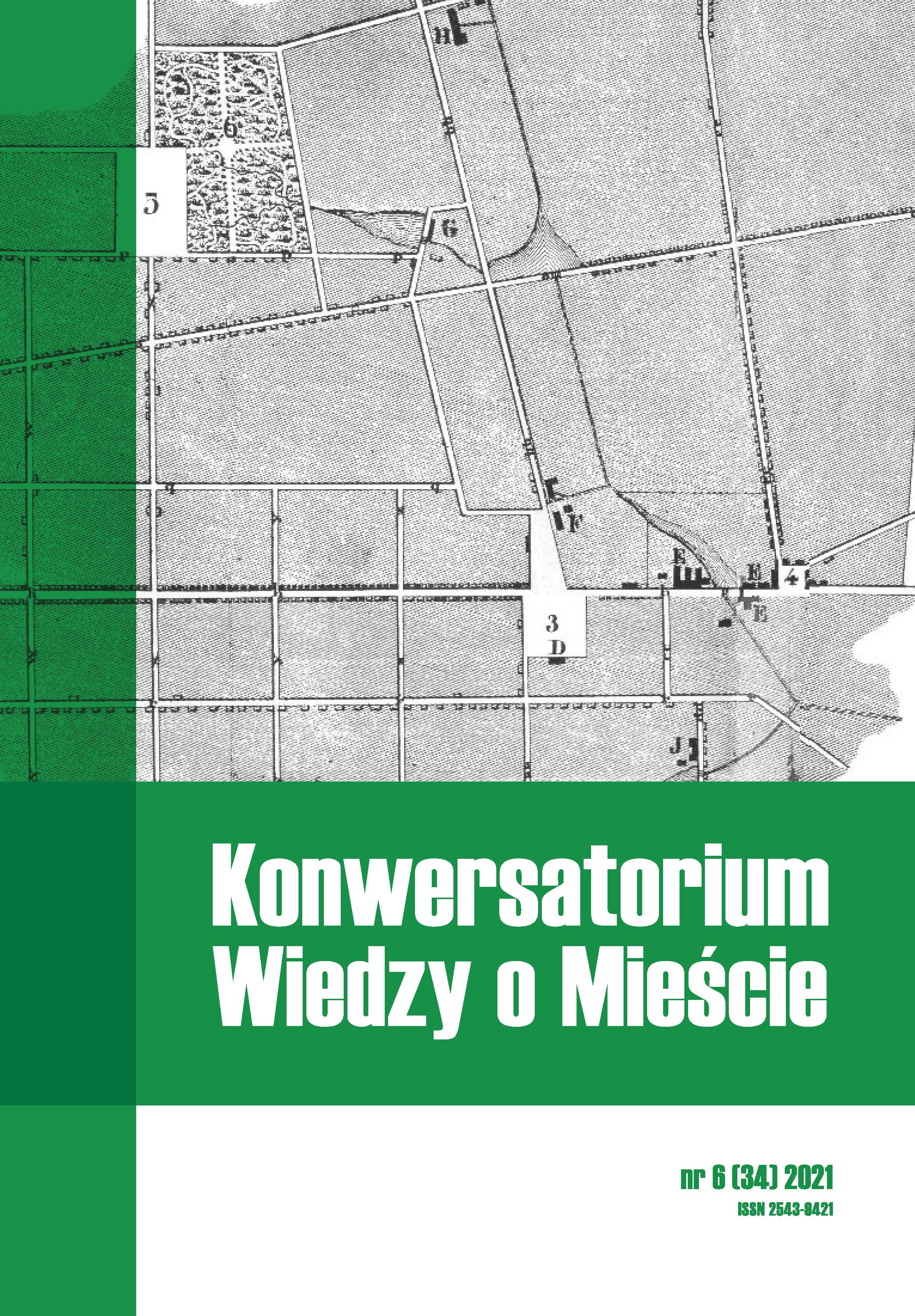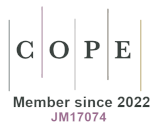Zorientowany na turystykę plan ochrony zabytkowej części miasta w oparciu o elementy zagospodarowania przestrzennego: przypadek miasta Jazd w Iranie
DOI:
https://doi.org/10.18778/2543-9421.06.08Słowa kluczowe:
plan ochrony, elementy zagospodarowania przestrzennego, rozwój turystyki, dzielnica, historyczna część miastaAbstrakt
Po wpisaniu historycznej części miasta Jazd na listę światowego dziedzictwa UNESCO w 2017 r. liczba odwiedzających miasto turystów wzrosła. Omawiany w artykule obszar składa się z kilku dzielnic. Niniejsze badanie ma na celu przedstawienie propozycji planu ochrony najstarszej z nich, czyli dzielnicy Shah Abul-Ghasem, stworzonego na podstawie podziału elementów zagospodarowania przestrzennego zaproponowanego przez Golkara (2000). Analiza została przeprowadzona w oparciu o badania terenowe w rzeczonej dzielnicy. Obiekty będące elementami zagospodarowania przestrzennego zostały sfotografowane, a następnie podzielone na kategorie jako środowiskowe, funkcjonalne oraz estetyczno-eksperymentalne. Na podstawie zebranych wyników zaproponowano rekomendacje dla rozwoju turystyki w badanym obszarze.
Bibliografia
Abid, S. (2016). An examination of heritage protection and conservation practices in the pilgrimage city of Najaf. Sheffield: University of Sheffield. Retrieved from: https://etheses.whiterose.ac.uk/17278/1/Sadiq.Abid.pdf (5.08.2018).
Google Scholar
Afshari Sistani, I. (1975). Memorials of Yazd. Tehran: The National Heritage Association.
Google Scholar
Afshari Sistani, I. (1999). Recognition of Yazd province. Tehran: Hirmand Publications.
Google Scholar
Anwar, N., Ahmed, F.N. (2017). Structural cross-sections. Cambridge, MA: Elsevier.
Google Scholar
Aslani, E., Shahriari, S.K., Zabihi, H. (2020). Prioritization of tourism attractions of Yazd city based on development feasibility analysis. Gardeshgari-e-shahri, 7 (2), 19–35. https://doi.org/10.22059/jut.2020.285790.688
Google Scholar
Cravidão, F., Nossa, P., Santos, N., Vidal, M., Crous, N., Aulet, S., Dallari, F. (2018). Tourism at world heritage sites opportunities and challenges. In: S.D. Ascaniis, M. Gravari-Barbas, L. Cantoni (eds), Tourism management at UNESCO World Heritage Sites (pp. 23–30). Lugano: Università della Svizzera italiana.
Google Scholar
Dehghan Pour Farashah, M.H., Aslani, E., Khademzade, M. (2018). Strategic planning of cultural tourism development in Historic City of Yazd (case study: Fahadan neighbourhood). Almatourism: Journal of Tourism, Culture and Territorial Development, 9 (18), 23–44. https://doi.org/10.6092/issn.2036-5195/8285
Google Scholar
Engstrom, R., Ofiesh, C., Rain, D., Jewell, H., Weeks, J. (2013). Defining neighborhood boundaries for urban health research in developing countries: A case study of Accra, Ghana.
Google Scholar
DOI: https://doi.org/10.1007/978-94-007-6732-4_2
In: J.R. Weeks, A.G. Hill, J. Stoler (eds), Spatial Inequalities: Health, Poverty, and Place in Accra, Ghana. Vol. 9 (pp. 27–38). Dordrecht–Heidelberg–New York–London: Springer. https://doi.org/10.1080/17445647.2013.765366
Google Scholar
DOI: https://doi.org/10.1080/17445647.2013.765366
Foruzan, I. (2014). The role of religious tourism in the development and growth of urban metropolis (In the case of Mashhad, Iran). Famagusta: Eastern Mediterranean University (EMU).
Google Scholar
Golkar, K. (2000). Components of urban design quality. Journal of Soffeh, 23 (11), 38–65.
Google Scholar
Hakimian, S., Afshar, A., Kowalczyk-Anioł, J. (2019). Returning life to the center of Tehran: The Oudlajan foodscape. Turyzm/Tourism, 29 (2), 31–41. https://doi.org/10.18778/0867-5856.29.2.04
Google Scholar
DOI: https://doi.org/10.18778/0867-5856.29.2.04
Hmood, K.F. (2019). Introductory chapter: Heritage conservation – rehabilitation of architectural and urban heritage. In: K.F. Hmood (ed.), Urban and architectural heritage conservation within sustainability (pp. 1–12). London: IntechOpen. https://doi.org/10.5772/intechopen.86670
Google Scholar
DOI: https://doi.org/10.5772/intechopen.78244
Ja’fari, J.I.M. (1964). The history of Yazd. Tehran: Firm of Translations and Book Publishing.
Google Scholar
Kateb Yazdi, A.I.H. (1979). The new history of the Yazd. Tehran: Amir Kabir Publication.
Google Scholar
Khademzade, M.H. (2009). Historical communities of Yazd. Tehran: Sobhan Noor Publications.
Google Scholar
Khaksari, A., Lee, T.J., Lee, C.K. (2014). Religious perceptions and hegemony on tourism development: The case of the Islamic Republic of Iran. International Journal of Tourism Research, 16 (1), 97–103. https://doi.org/10.1002/jtr.1917
Google Scholar
DOI: https://doi.org/10.1002/jtr.1917
Khan, M.A. (2005). Principles of tourism development. New Delhi: Anmol Publications.
Google Scholar
Kowalczyk-Anioł, J., Afshar, A. (2018). Tourism gentrification as a tool for the city development. The example of Mashhad in Iran. Turystyka Kulturowa, 2, 7–25.
Google Scholar
Lak, A., Gheitasi, M., Timothy, D.J. (2020). Urban regeneration through heritage tourism: Cultural policies and strategic management. Journal of Tourism & Cultural Change, 18 (4), 386–403. https://doi.org/10.1080/14766825.2019.1668002
Google Scholar
DOI: https://doi.org/10.1080/14766825.2019.1668002
Lominé, L., Edmunds, J. (2007). Key concepts in tourism. New York: Palgrave Macmillan.
Google Scholar
DOI: https://doi.org/10.1007/978-1-349-92040-2
McCutcheon, M. (2010). Roget’s super thesaurus. Ohio: Writer’s Digest.
Google Scholar
MMBW (1981). Melbourne strategy implementation report. Retrieved from: https://www.planning.vic.gov.au/__data/assets/pdf_file/0019/100819/Metropolitan-Strategy-Implementation-chapter15.pdf (5.08.2018).
Google Scholar
Naghshan Consultant Engineers (2008). Feasibility study of inscription of old fabric of Yazd on the list of World Heritage. Yazd: Cultural Heritage, Handicrafts and Tourism Organization of Yazd province.
Google Scholar
Nasrolahi, A., Roux, J.-M., Ghasvarian Jahromi, L., Khalili, M. (2019). Assessment of local people opinion after World Heritage Site designation, case study: Historic City of Yazd, Iran. Heritage, 2 (2), 1739–1747. https://doi.org/10.3390/heritage2020106
Google Scholar
DOI: https://doi.org/10.3390/heritage2020106
O’Gorman, K., McLellan, L.R., Baum, T. (2007). Tourism in Iran: Central control and indigeneity. In: R. Butler, T. Hinch (eds), Tourism and indigenous peoples (pp. 269–282). London: Routledge. https://doi.org/10.4324/9780080553962-31
Google Scholar
DOI: https://doi.org/10.4324/9780080553962-31
Polo, M. (1993). The travels of Marco Polo: The complete Yule‐Cordier edition. New York: Dover Publications.
Google Scholar
Rastegar, R., Zarezadeh, Z., Gretzel, U. (2021). World heritage and social justice: Insights from the inscription of Yazd, Iran. Journal of Sustainable Tourism, 29 (2–3), 521–540. https://doi.org/10.1080/09669582.2020.1782925
Google Scholar
DOI: https://doi.org/10.1080/09669582.2020.1782925
Rezaei, N. (2017). Resident perceptions toward tourism impacts in historic center of Yazd, Iran. Tourism Geographies, 19 (5), 734–755. https://doi.org/10.1080/14616688.2017.1331261
Google Scholar
DOI: https://doi.org/10.1080/14616688.2017.1331261
Sarkheyli, E., Rafieian, M., Taghvaee, A.A. (2016). Qualitative sustainability assessment of the large-scale redevelopment plan in Samen district of Mashhad. International Journal of Architecture and Urban Development, 6 (2), 49–58.
Google Scholar
Scott, N., Jafari, J. (2010). Tourism in the Muslim world. Bingley: Emerald. https://doi.org/10.1108/S2042-1443(2010)2
Google Scholar
DOI: https://doi.org/10.1108/S2042-1443(2010)2
Seddighi, M.J. (2019). An urban design method for rehabilitating historic cities in Iran: The case of Shiraz historic fabric. Oxford: Oxford Brookes University.
Google Scholar
Shamseh Consultant Engineers (2006). Registration of Historic City of Yazd in National Monuments List. Yazd: Yazd World Heritage Office.
Google Scholar
Statistical Centre of Iran. (2016). Selected results of the 2016 National Population and Housing Census. Retrieved from: https://www.amar.org.ir/Portals/1/census/2016/Iran_Census_2016_Selected_Results.pdf (5.08.2018).
Google Scholar
UNESCO (2008). World Heritage information kit. Retrieved from: https://whc.unesco.org/document/102072 (5.08.2018).
Google Scholar
UNESCO (2017a). Historic City of Yazd. Retrieved from: http://whc.unesco.org/en/list/1544/documents/ (5.07.2017).
Google Scholar
UNESCO (2017b). Historic City of Yazd. Retrieved from: https://whc.unesco.org/en/list/1544 (5.08.2018).
Google Scholar
Weeks, K.D., Grimmer, A.E. (1995). The secretary of the interior’s standards for the treatment of historic properties: With guidelines for preserving, rehabilitating, restoring & reconstructing historic buildings. Vol. 2. Washington, D.C.: U.S. Department of the Interior.
Google Scholar
Zolfaghari, H. (2007). Potentials and limitations in Iran for developing tourism sector. Paper presented at the ”GEOMED International Symposium on Geography”, Antalya, Turkey.
Google Scholar
Pobrania
Opublikowane
Jak cytować
Numer
Dział
Licencja

Utwór dostępny jest na licencji Creative Commons Uznanie autorstwa – Użycie niekomercyjne – Bez utworów zależnych 4.0 Międzynarodowe.









